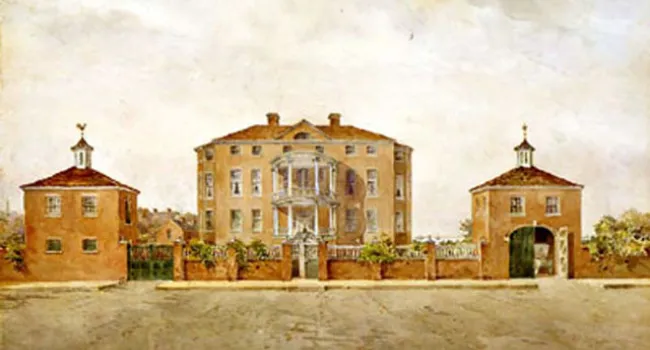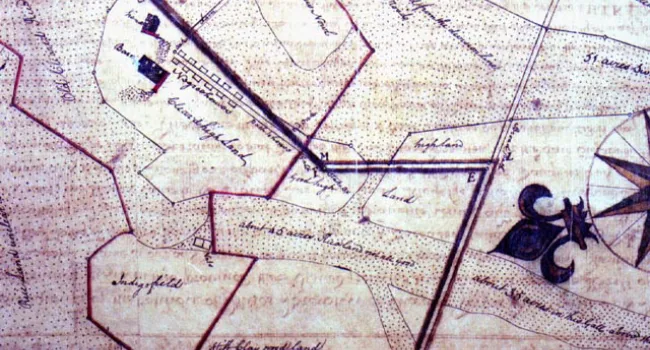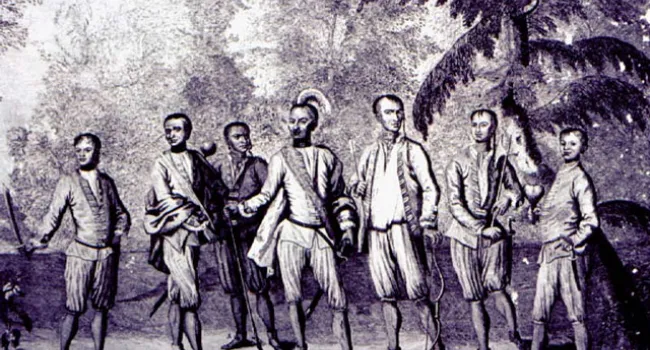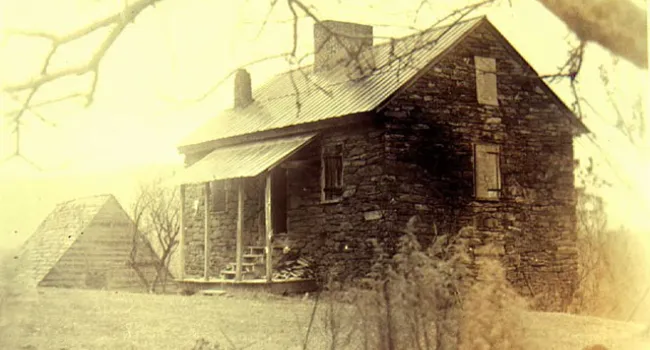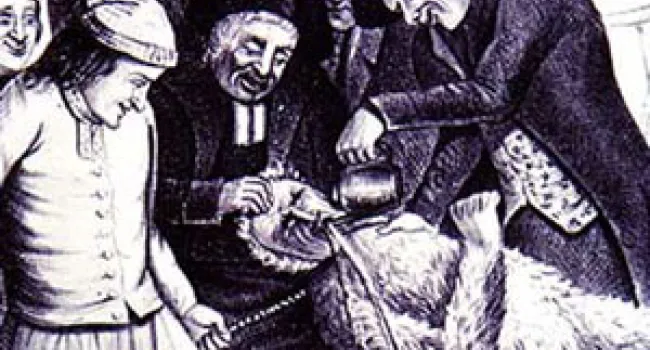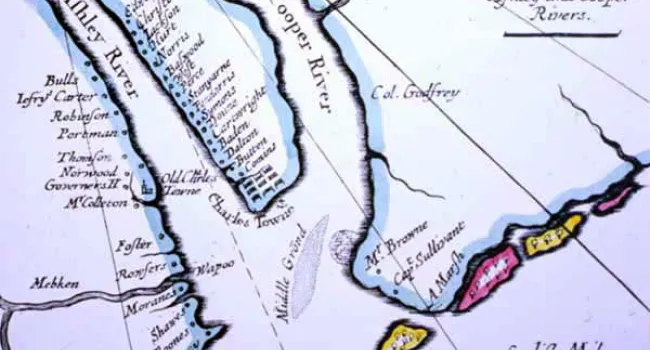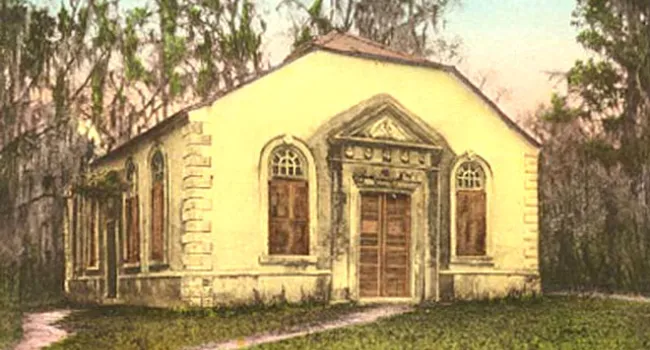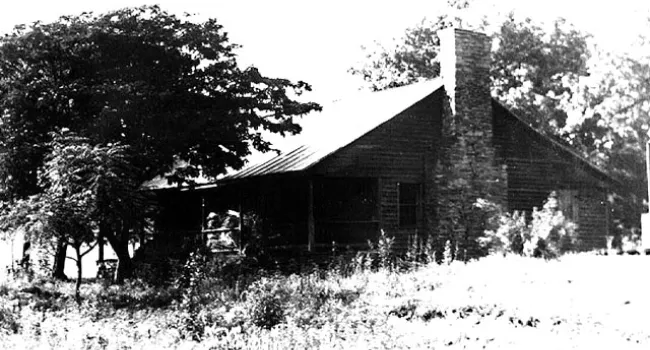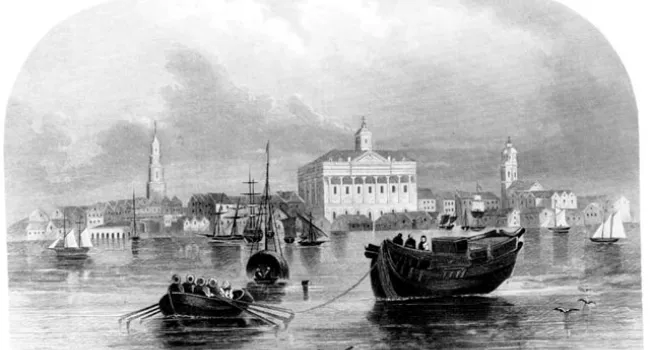
The city of Charleston in 1742 was a bustling port town of 6,800, the fourth largest city in British North America. Half of its population were African-American slaves. They were the labor on which much of the city's great wealth had developed from the cultivation of rice. The shipping trade that filled the harbors with "Canoes, Boats, Pettygues," crafts of all sizes and descriptions, docked at eight wharves or "bridges" jutting out into the Cooper River. On the "middle bridge" alone were eight warehouses. When this engraving was completed, Charleston was recovering from the terrible fire of 1740 that destroyed 334 houses.
Courtesy of the South Caroliniana Library.
Standards
- This indicator was designed to encourage inquiry into the geographic and human factors that contributed to the development of South Carolina’s economic system. This indicator was also written to encourage inquiry into South Carolina’s distinct social and economic system as influenced by British Barbados.
- 8.1.CE Analyze the factors that contributed to the development of South Carolina’s economic system and the subsequent impacts on different populations within the colony.




